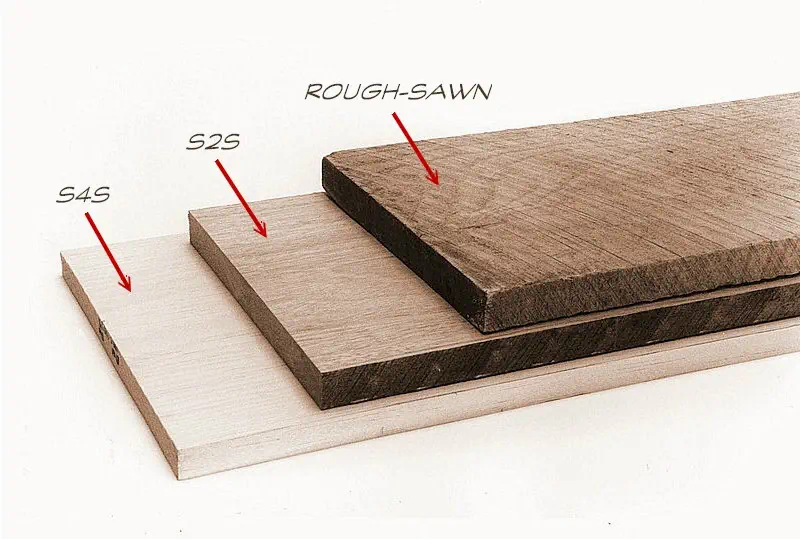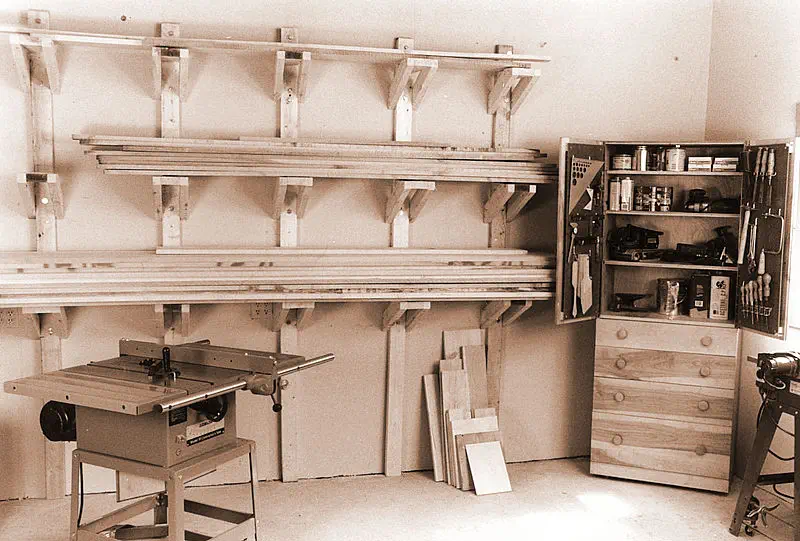ROUGH OR SURFACED?
Which should you choose? Ready-surfaced lumber saves you the time it takes to plane and joint. But if the wood should cup or bow, you’ll have to live with the imperfections. Rough-sawn lumber gives you some extra stock so you can true a slightly warped board, making the surfaces perfectly straight and flat.
Many craftsmen insist that you can get truly flat lumber only by surfacing it yourself. But this can be impractical, especially if you have a small shop and limited surfacing capabilities. Unless you have a wide jointer and a large planer, it makes sense to buy surfaced lumber (S2S – surfaced two sides) for noncritical parts that don’t have to be perfectly true. When making critical parts such as door frame members and drawer sides, however, you should always start with rough lumber and true it.
S4S – surfaced four sides – stock should be your last choice. It just isn’t worth the money you pay for jointing the edges. Provided you have a jointer, you can make much straighter edges if you joint the parts as you cut them to size.

Commercial lumber comes unsurfaced (rough-sawn), face-planed only (S2S), or face-planed and edge-jointed (S4S).*



